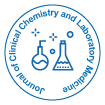

ā°°ā°ūā°Žā°°āąā°āą ā°Žā°ŋā°Ŋāąā°ā°Ąā°ŋ, ā°ļāąā°āąā°Ŧā°ūā°Ļāą ā°Žāąā°°ā°ūā°ā°āąā°°āąā°ļā°ŋā°Ļā°ŋ, ā°Ūā°°ā°ŋā°Ŋā°ū ā°ā°ŋā°Ŋāąā°ēā°ŋā°Ŋā°ū ā°ā°ā°ŋā°Ąā°ŋ, ā°ā°ŋā°Ŋāąā°ēā°ŋā°Ŋā°ū ā°Šāąā°ēāą, ā°ā°Ļāąā°°ā°ŋā°āą ā°ā°ūā°Šāąā°Ąā°ŋā°ā°ūā°ļā°ū, ā°ā°ļā°ūā°Žāąā°ēāąā°ēā°ū ā°āąā°°ā°ŋā°āąā°āą, ā°ā°ŋā°Ŋā°ūā°Ļāą ā°ā°ūā°°āąā°ēāą ā°Ąā°ŋ ā°°āąā°ā°āą, ā°Ŧāąā°ēāąā°°āąā°ā°ā°ŋā°Ļā°ū ā°Ąāąā°Ŋāąā°ā°ū, ā°Ąāąā°°ā°ūā°āąā°ļāą ā°āąā°°āąā°āąā°Ŋāą ā°Ūā°°ā°ŋā°Ŋāą ā°Ļā°ŋā°āąā°ēāą ā°ļāąā°ļā°ŋā°Ŋāą
Objective: Malondialdehyde (MDA) is an index of oxidative stress. In biological matrices MDA exists in both free (f-MDA) and bound (b-MDA) forms. In this report, a method to detect f-MDA and t-MDA was developed in human serum, based on MDA derivatization with 2,4-dinitrophenylhydrazine (DNPH) and HPLC separation. Methods: This method gave high sensitivity, with Limits of Detection (LOD) and Limits of Quantification (LOQ) of 3.5 pmol/ml and 10 pmol/ml, respectively; while recoveries of t-MDA from spiked matrices (R%) reached 98.1 ± 1.8 and 96.51 ± 1.8 for f-MDA. Considering the lower levels of f-MDA in biological fluids, this method improves derivatization conditions (DNPH medium solution, time and temperature) and yielded 47 ± 12 pmol/ml of f-MDA in serum of 17 controls. Our method succeeded to determine f-MDA and t-MDA in hemodialysed patients. Results: Results indicated that f-MDA levels increased, b-MDA even doubled respect to controls. After dialytic treatment, b-MDA did not change, while f-MDA decreased up to pre-dialytic values, before the following cycle. Data suggest that patients on chronic Hemodialysis (HD) presented a remarkable oxidative stress status highlighted by lipid peroxidation increase. Conclusion: In conclusion, this method proposes a simple and sensitive alternative to preexisting protocols that could be suitable for a non-invasive evaluation of oxidative stress in human diseases.